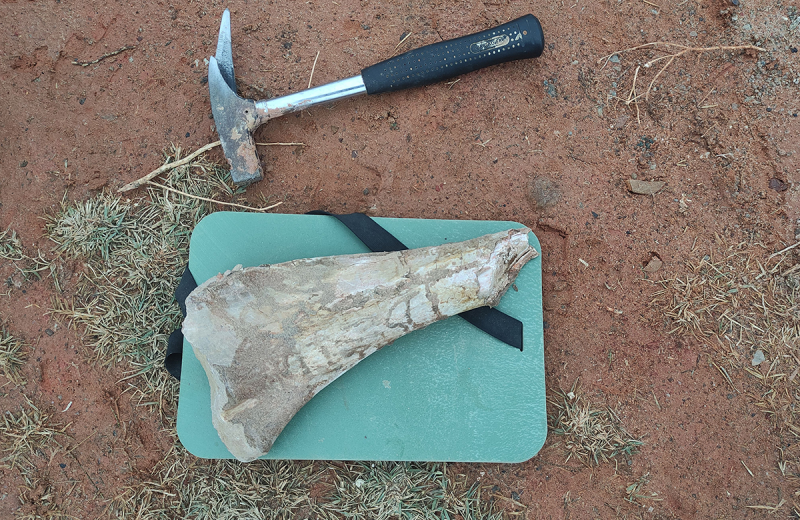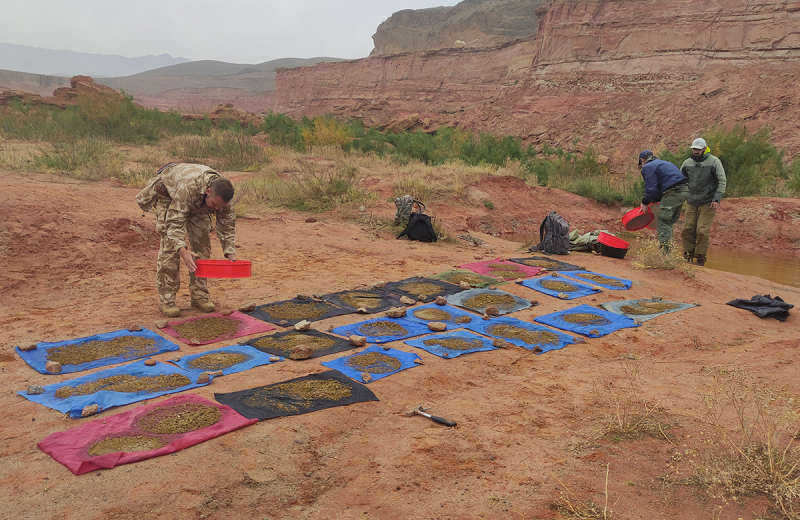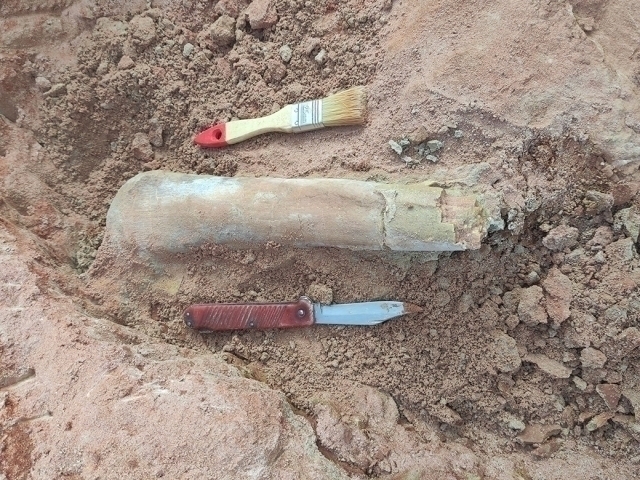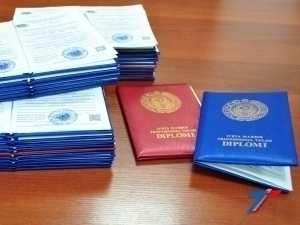85 million-year-old dinosaur fossils were found near Uzbekistan
Interesting
−
11 November 2024 9573 3 minutes
A rich complex of dinosaur fossils, including the remains of therizinosaurs, has been discovered in the village of Kansai in the Sogd region of Tajikistan, according to a report from "Asia-Plus."
A treasure trove of dinosaurs
The village of Kansai in northern Tajikistan is renowned among paleontologists worldwide. This site has yielded a rich collection of dinosaur fossils, notably the remains of therizinosaurs.
In the 1960s, the USSR Academy of Sciences’ Institute of Paleontology conducted major excavations under the guidance of prominent paleontologist Anatoly Rozhdestvensky. These excavations uncovered a variety of "lizard-footed" dinosaurs, including the almost completely preserved femur of a therizinosaurus—a significant and informative part of its skeleton.
These dinosaurs, dating back to the Late Cretaceous period, were among the last and largest of their kind.

The Cretaceous Period, which spanned approximately 79 million years, began around 145 million years ago and ended 66 million years ago, making it the longest period of the Mesozoic Era.
In the 1980s, further large-scale excavations were conducted in Kansai. Renowned Russian paleontologist Lev Nesov discovered the remains of mammals from the Cretaceous period at the site.
Frogs, crocodiles, turtles, and dinosaurs once more
The focus of the latest scientific expedition was not primarily on dinosaurs but on studying small vertebrates from the Late Cretaceous period.
A joint expedition took place from October 20 to 28, involving Russian paleontologists from Yekaterinburg, St. Petersburg, and Moscow, as well as two scientists from Tajikistan: paleontologist Umid Nabiyev and ecologist-ichthyologist Gofurjon Karimov. The group was led by Professor Pavel Skuchas, head of the Department of Zoology and Vertebrates at St. Petersburg State University.
The excavation work was carried out in a vast canyon, examining the upper chalk deposits along its walls. The team unearthed remains of a lizard, salamander, frog, and fish.

“We used a washing method, which allows us to examine tiny fragments like bones, vertebrae, teeth, and jaws. Given their fragility, we applied special glue to the stone surfaces, enabling us to remove entire bones without causing damage,” explained Umid Nabiyev.
The scientists also found remains of larger animals from this period, including crocodile and turtle shell fragments and dinosaur bone fragments.
“These dinosaurs lived approximately 85 million years ago. Further research will determine which parts of the body the discovered bones belong to,” said Nabiyev.
Excavations are set to continue in May 2025, with plans to explore newly dug canyons in Kansai created by raw material extraction for cement production, which could yield more fossils.
Some of the discovered bones have been handed over to the Museum of Historical Local History in the Sogd region.
Previously, Kyrgyz scientists, in collaboration with paleontologists from the Museum of Paleontology in Munich, discovered remains of predatory theropod dinosaurs in the mountainous desert near Tashkomir. The creature was named Alpkarakush kyrgyzicus.
Live
All




